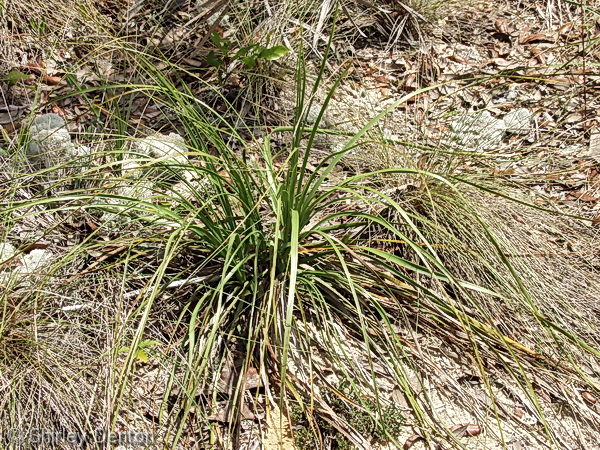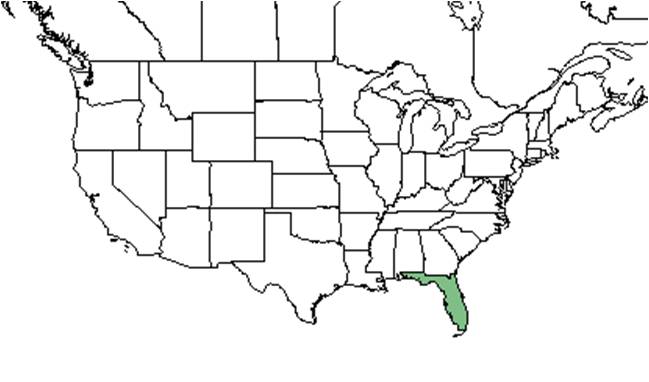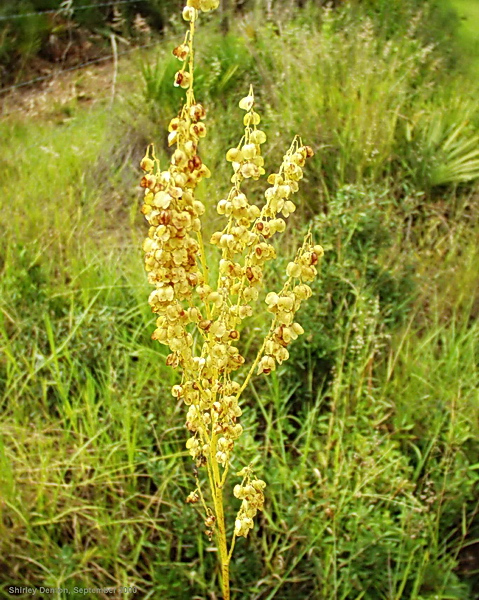Nolina brittoniana
| Nolina brittoniana | |
|---|---|

| |
| Photo taken by Shirley Denton (Copyrighted, Use by photographer’s permission only) Nature Photography by Shirley Denton | |
| Scientific classification | |
| Kingdom: | Plantae |
| Division: | Magnoliophyta - Flowering plants |
| Class: | Liliopsida – Monocotyledons |
| Order: | Liliales |
| Family: | Ruscaceae |
| Genus: | Nolina |
| Species: | N. brittoniana |
| Binomial name | |
| Nolina brittoniana Nash | |

| |
| Natural range of Nolina brittoniana from USDA NRCS Plants Database. | |
Common name: Britton's beargrass
Contents
Taxonomic notes
Description
A description of Nolina brittoniana is provided in The Flora of North America.
It is a perennial that grows from a short, thick, bulb-like rootstock [1].
It is very similar to Nolina atopocarpa; however, N. atopocarpa has shorter leaves, green flowers, and asymmetrical fruits [2].
Distribution
This species is a narrow endemic, nearly entirely limited to the Lake Wales Ridge (Dolan et al. 2004). Most species endemic to the Lake Wales Ridge are selective in habitat; however, N. brittoniana is a edaphic generalist and has a broad microhabitat tolerance (Menges 1998).
Ecology
Habitat
In the Lake Wales Ridge, N. brittoniana occurs in scrub oak sand ridges and Pinus clausa-Ceratiola scrubs. Associated species include sand pine, scrub oak, and palmetto (FSU Herbarium).
Phenology
Fruits May through August (FSU Herbarium).
It has been observed that N. brittoniana has low levels of genetic variation despite having traits that are correlated with high genetic variation (Hamrick et al. 1991). However, compared to other Lake Wales Ridge endemics, N. brittoniana has one of the highest levels of genetic diversity (Menges and Dolan 2001).
Seed dispersal
Seed bank and germination
Fire ecology
Pollination
The following Hymenoptera families and species were observed visiting flowers of Nolina brittoniana at Archbold Biological Station (Deyrup 2015):
Apidae: Apis mellifera
Leucospididae: Leucospis robertsoni, L. slossonae
Sphecidae: Ammophila pictipennis, Bicyrtes quadrifasciata, Cerceris fumipennis, C. rufopicta, Sphex ichneumoneus
Vespidae: Pachodynerus erynnis
Use by animals
Diseases and parasites
Conservation and Management
Cultivation and restoration
Photo Gallery
Flowers of Nolina brittoniana Photo by Shirley Denton (Copyrighted, Use by photographer’s permission only) Nature Photography by Shirley Denton
References and notes
Deyrup, M.A. and N.D. 2015. Database of observations of Hymenoptera visitations to flowers of plants on Archbold Biological Station, Florida, USA.
Florida State University Robert K. Godfrey Herbarium database. URL: http://herbarium.bio.fsu.edu. Last accessed: October 2015. Collectors: Edwin L. Bridges, D. Burch, R.J. Eaton, H.A. Gleason, Robert K. Godfrey, Steve L. Orzell, James D. Ray, D.B. Ward. States and Counties: Florida: Highlands, Orange, Polk. Compiled by Tall Timbers Research Station and Land Conservancy.
